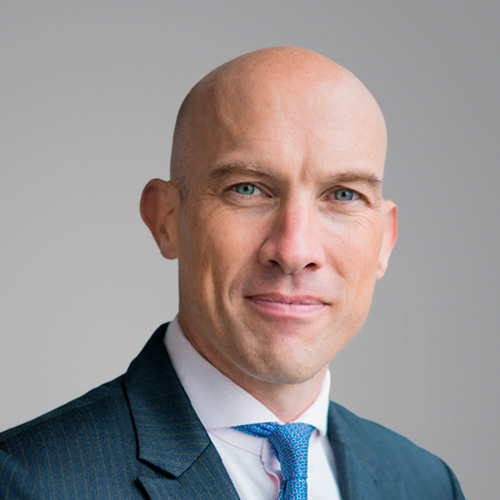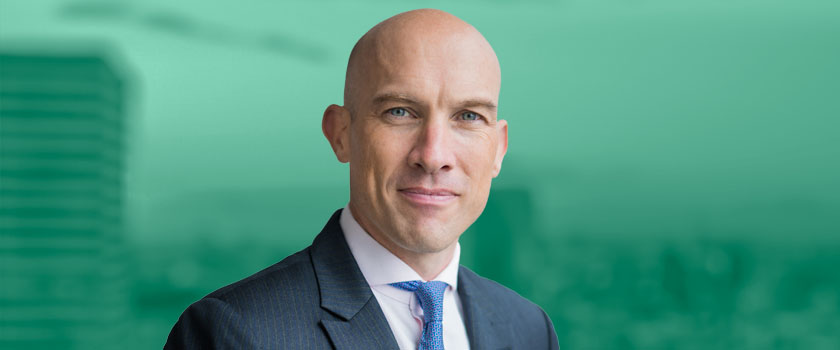Hubbis (10.01.2022) - Having more than doubled its assets under management (AUM) since 2016, UBP's wealth and asset management businesses at the end of 2020 managed more than USD 30 billion across Asia.
2021 turned out to be positive from a business perspective, and Michael Blake reported in a recent interview with Hubbis that he continues to see significant growth opportunities throughout the region.
Independent and staying that way
By way of background, UBP was founded in 1969 by Edgar de Picciotto, whose vision from the outset was to offer investors a high-quality and innovative wealth and asset management service. In its fifty-plus year history, the bank has maintained its independence and remains on the expansion trail. In recent years, UBP has acquired the international private banking divisions of Royal Bank of Scotland (Coutts) and Lloyds, the Swiss subsidiary of the ABN AMRO group, ACPI Investments in London, and Banque Carnegie Luxembourg.
As UBP is not listed and has remained family-owned since its founding, Blake believes the bank is able to take a longer-term view than perhaps a public company would consider, given the pressures of quarterly reporting. He told us recently that he believes that this is a major positive for the bank in Asia, as he and colleagues can focus on the long-term success of the business and sidestep pressure to pursue short-term growth for growth’s sake.
Organic and acquisitive expansion
The bank’s significant and timely acquisitions, combined with organic growth, have helped group-wide AUM to double in the last decade. As at June 2021, the group’s AUM totalled CHF 161.1 billion. The bank today operates from more than 20 locations worldwide, with its Asia operations including the major Hong Kong and Singapore hubs, as well as offices in Tokyo, Taiwan and Shanghai.
UHNW is the fastest-growing client segment of UBP’s business across Asia. The bank’s proposition is developed jointly with Asset Management and starts with a highly customised investment strategy that reflects the needs of the client, anchored around three niche investment capabilities: bespoke mandates, credit solutions, private markets and thematic advisory.
UBP has also been deploying its wealth planning and family office expertise in the region, with a team of seasoned wealth planners in Hong Kong and Singapore, supported by family office specialists in Switzerland. They provide advice to wealthy families seeking customised investment strategies, efficient operational structures and access to UBP’s family office partner network.
Robust growth in Asia
Blake told delegates at the December 2 event how business across the industry and the region in 2021 had been robust, especially in the first quarter, although there had clearly been a change in sentiment as the year progressed, for a variety of reasons.
“We have seen early enthusiasm in the markets giving way to a lot more questions as clients have looked beyond the V-shaped recovery to a more uncertain environment,” he reported, “with questions around inflation, central bank tapering, and of course increased volatility due to the course of the virus. A bigger question amongst all this is whether we are entering a period of lower public market returns and, if so, how to position portfolios accordingly.”
DPM on the rise
The result, he explained, is that clients have turned increasingly to their bankers for advice and have adjusted their investment approach, choosing to entrust more of their funds to the professional for discretionary portfolio management services, migrate more of their money to private market assets and increase allocations to thematic strategies.
“We have also seen a considerable amount of tactical flow product trading,” he added. “There will always be a group of clients, particularly in Asia, who want to take advantage of short-term tactical ideas, so we have continued to develop our advisory platform in response.”
In broader terms, he reported that he remains confident that these themes will remain relevant in 2022 from a market and UBP perspective. “We've been building each of these proposition areas for a number of years now, which means that we can offer clients strong investment solutions that align closely with today’s market environment and investment needs.”
Differentiation
Blake told delegates that differentiation centres on UBP’s bankers. “We are a banker’s bank,” he said. “What I mean by that is that our clients are looking for a long-term advisor, and we believe in building the business around the advisory relationship that our Relationship Managers have developed with their clients.” He added that the strength and stability of the platform is also important, commenting that clients are today more discerning about a bank’s financial strength than a decade ago; clients compare Tier 1 capital and liquidity ratios and want to make sure that their bank will be resilient in difficult times, as well as in good times.
“And finally,” he explained, “we see time and again that clients want to build a customised investment strategy, and while everybody says they offer that, it's much easier said than done. We are obsessive about delivering customised investment strategies to clients and much of our time is spent working to optimise this aspect of the business.”
Digital evolution with human skills at the core
As for digital transformation, Blake explained that discussions around technology are today much more nuanced and granular than before. “Five years ago, technology’s impact on wealth management was presented as a zero-sum game, as a binary choice between digital or human engagement. The debate has evolved and I certainly see a strong possibility for a hybrid model, where technology enables richer conversations with clients,” he observed.
“That may encompass digital communication channels, it may involve AI-assisted investment insights and asset allocation, or it may simply be about removing some of the pain factors from the way that clients interact with their bank. Precisely targeted technology can have a transformative impact on client relationships by supporting, rather than removing, the role of the relationship manager.”
But he added that perhaps for the mass affluent wealth business, there's a much stronger argument for a lighter touch but higher volume model, which is largely digitally driven.
“I think, for pure private bank players such as UBP, human interaction remains the core which we build around, so we see technology as an enabler, boosting our proposition, enhancing our investment capabilities and improving delivery.”
Talent – gradually drawing the best from a deep pool
Blake agreed with the consensus view that talent was tough to identify and that competition, which had always been fierce, had intensified. “But we are not looking for hundreds of people,” he said, “we are looking for a small number of highly skilled individuals, those with advisory experience of between 10 and 20 years, who want to work with a bank where they can manage clients and, if they wish, build a team. People who join us are often interested to work with an organisation that takes a balanced commercial approach, that is less hierarchical, and where they can really put their best foot forward for their clients. When it comes to new joiners, we have many good conversations, some of which come to fruition quickly, some of which take more time. But we are patient. We stick to our focus of quality over quantity in order to maintain our standards and culture.”
He noted that there is a trend towards some lateral hiring from other parts of the finance industry as well. “You’ll see many successful private bankers who started out life as corporate bankers,” he explained. “You will see them attracted to our industry as a natural step in their careers and because it is fundamentally attractive for experienced bankers to transition the relationships they have built from the corporate to the personal.”
He added that he is therefore not only interviewing private bankers, but also talking to those other bankers, as well as investment consultants, investment advisors, people who've worked in family offices and those who have experience in the growing private markets space.
“There is a very broad talent pool and there is no shortage of candidates, quite the opposite actually, but it just comes down to finding the right fit for both parties,” he concluded.
Onshore and offshore – both growing apace
Looking ahead, Blake observed that the onshore wealth management offering across Asia was blossoming, but so too the offshore model.
“The industry as a whole is growing,” he said, “and it remains an attractive industry to be in. We see an increasing amount of growth and movement between the onshore and the international markets.”
As for his key priorities, Blake told delegates that the bank has successfully spent the last year plus building its investment capabilities in Asia, focusing on discretionary portfolio management (DPM), a subject he had already touched upon, and private markets, the latter now including pre-IPO investments in addition to longer-term real estate opportunities, and also private debt, and is now building a private equity capability. “So, DPM, as I explained, has enjoyed real growth, and the private markets space for us has become an extremely important part of the proposition.”
Additionally, Blake and his teams have been expanding their Asian investment expertise.
“We have recently brought in Asian healthcare and technology analysts, and the result will be the launch of new tech and healthcare strategies in the course of 2022, building on the trend towards thematics and highly focused opportunities for our clients,” he reported.
Next – China
Finally, the bank is expanding its geographic lens, with China offering what Blake described as a golden window of opportunity. “This is the right time for us to start thinking seriously about how to secure more exposure to Mainland Chinese wealth, which represents perhaps 60% of the wealth pool today in Asia,” he explained.
“This is timely, as there are some particularly interesting and positive changes in regulation that make it easier for international wealth managers to establish agile businesses on the mainland and start to provide a service that’s meaningful for Mainland Chinese clients. So, this for me is a key priority next year and we'll be spending a lot of time on it.”
It was clear from his observations that Blake and UBP have a defined vision for the growth of their business within the overall evolutionary trends of Asian markets. He recognises that there is intense competition – perhaps especially in building talent, further evolving digitisation and moving into Mainland China – but these are all challenges that he relishes, that UBP is well prepared for, and that will open the door to significant opportunities ahead.









